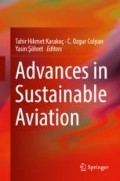Abstract
Traditionally components of aviation gasoline are produced by various technological processes. The basic fractions of aviation gasoline are straight gasoline distillation of crude oil and catalytic reforming, cracking, and blending. The main components are high-octane alkylate, technical isooctane, toluene, pirobenzol, alkylbenzene, and ethyl fluid.
The main indicator of the quality of gasoline is its antiknock rating. This ability to burn fuel without detonation of reciprocating engines with spark ignition, which is estimated octane number and describe the operational and environmental characteristics of transport.
To provide antiknock rating and high octane number for aviation fuel, add different antiknock additives. The most effective now is tetraethyl lead (TEL).
Today all the known brands of aviation gasoline used TEL as antiknock additive despite its toxicity. Therefore, development of new environmentally safe aviation gasoline is a topical modern problem that needs solving.
Access this chapter
Tax calculation will be finalised at checkout
Purchases are for personal use only
References
Boychenko, S. V., Boychenko, M. S., Boar, S. N., & Lychmanenko, O. G. (2015). Effect of additives on properties of aliphatic alcohols gasoline: Analytical review. Science-Intensive Technologies, 1(25), 86–92.
Boychenko, S. (2015). Causal analysis of aviation gasoline modification. In S.V. Boychenko, Lady K, O.G. Lychmanenko (Eds.), Proceedings of the National Transport University (pp. 3–13). Series “Engineering”. Scientific and technical collection. 2(32).
Danilov, A.M. (2000). Application additives in fuel for cars: Ref. ed. A.M. Danilov. Chemistry,. 232:ill.
Asyaev, A.N. (2010). Study effect of alcohol quality and composition uhlevodorodnoy fraction on physico-chemicals and эkspluatatsyonnыe indicators byoэtanolnoho fuel E85. In A.N. Asyaev, V.E. Emelyanov, E.A. Nikitin (Eds.), Technologies of oil and gas (pp. 24–27). 4.
Bondarenko, K. (2011). Prospects for the introduction of alternative fuels in aviation. In K.V. Bondarenko, S.V. Boychenko, V.G. Semenov (Eds.), Avyatsyonno kosmycheskaya-technics and technologies (pp. 76–80). 9(86).
Onoychenko, S.M. (2000). Research and development tracks unleaded petrol containing ethanol, dis. ... .. Candidate Sc. Science.: 05.17.07/Onoychenko Svetlana. M: 168 p.
Vdovin, V (2014). Modification of aviation gasoline by adding aliphatic alcohols: Literature review. In V.S. Vdovin, K.V. Bondarenko (Eds.), Open consumer information and computer yntehryrovannыe Technology (pp. 164–171). 64.
Market research biomethanol and its derivatives: [analyte. Report/Research. Techart]. M.: 2008. 22 p.
Lotko V., Lukanin V.N., Khachiyan A.S. (2000). Use of alternative fuels in internal combustion engines. MADI (TU) 311.
Karpov S.A, & Kunashev L.H., et al. (2006). Demonstrate how the aliphatic alcohols as environmentally friendly additives in car. Oil and gas business 2. The magazine. Access: http://ogbus.ru/.
Ablaev A.P. Biofuels: Thinking outside of the oil pipe, A.P. Ablaev, Ecologist. Vestnik. Russia. 2009. - № 2. 23–26.
Polunkyn, E. V., Kamenev, T. N., Pylyavskyy, V. S., et al. (2012). Operational properties of alternative motor fuels on the basis of oxygenates. Catalysis and neftehymyya, 20, 70–74.
Pylyavskyy, V. S., Gaidai, O. O., Kyrpach, K. O., et al. (2012). Operational properties of alternative motor fuels on the basis of oxygenates. Catalysis and neftehymyya, 21, 162–166.
Gaidai, O.O. (2011). Environmental and operational characteristics of biological motor fuel E-85 [electronic resource]. In A.A. Gaidai, Zubenko S.A., Polunkin E.V., Pylyavskyy V.S. (Eds.), Collected articles “Third Ukrainian Congress ecologists with international participation.” Ball. 1. 308–310. Access: http://eco.com.ua/.
Imankulov, N.N. (2010). Biobutanol – alternative motor fuel substitute. In N.N. Imankulov (Ed.), Scientific Bulletin of the southern region (pp. 3–7). 5–6 (35–36).
Vnukovo, N.V. (2011). Alternative fuel type yak basis resursozberezhennya i ekobezpeki road vehicles. In N.V. Vnukovo, M.V. Barun (Eds.), Alternative energy sources (pp. 45–55). 9 (91).
Ershov, M.A. (2012). Research biobutanol as a high octane gasoline component: avtopef.dis. for the degree of CAD. those. Sciences: spec. 05.17.07, “Chemical technology of fuel and high-energy substances” MA Ershov. 27.
Boychenko, S.V., Kuchma, N.M., Efimenko, V., Titov, A.S., Chernyak, L.M. (2006). Chemmotology: Teach method. manual. K: portrait water-in NAU, 160 pp.
Levinter, M.E., Akhmetov, S. (1992). Deep processing of oil: A manual for schools. M.: Chemistry. 224 p.: silt.
Smyshlyaeva, Y. A., Ivanchina, E. D., Kravtsov, A. V., Zuong, C. H. T., & Fan, F. (2011). Development of a database on the octane number of a mathematical model of the process of compounding of commercial gasoline. Bulletin of the Tomsk Polytechnic University, 318(3), 75–80.
Gureev, A.A. (1981). Production of high octane gasoline/. In A.A. Gora, Y.M. Zhorov, E.V. Smidovich. Moscow: Chemistry.
Boichenko, S., Lejda, K., Lychmanenko, O., Boichenko, M., & Reshetilowski, V. (2015). Modification of aviation gasoline with aliphatic alcohols additives: An analytical review of prospects. Internationl Journal Sustainable Aviation, 1(4), 324–332.
Lychmanenko, O.G. (2015). Pespektyvy reformulovanyh aviation gasoline. In O. Lychmanenko, S. Boychenko, K. Lady (Eds.), Systemy i srodki transportu samochodowego: Wibrane zagadnienia (pp. 251–256). Monografia № 6. Seria: Transport. Rzesow (Poland).
Author information
Authors and Affiliations
Corresponding author
Editor information
Editors and Affiliations
Rights and permissions
Copyright information
© 2018 Springer International Publishing AG
About this chapter
Cite this chapter
Kondakova, O., Boichenko, S. (2018). Environmentally Clean Reformulated Aviation Gasoline. In: Karakoç, T., Colpan, C., Şöhret, Y. (eds) Advances in Sustainable Aviation. Springer, Cham. https://doi.org/10.1007/978-3-319-67134-5_1
Download citation
DOI: https://doi.org/10.1007/978-3-319-67134-5_1
Published:
Publisher Name: Springer, Cham
Print ISBN: 978-3-319-67133-8
Online ISBN: 978-3-319-67134-5
eBook Packages: EnergyEnergy (R0)

